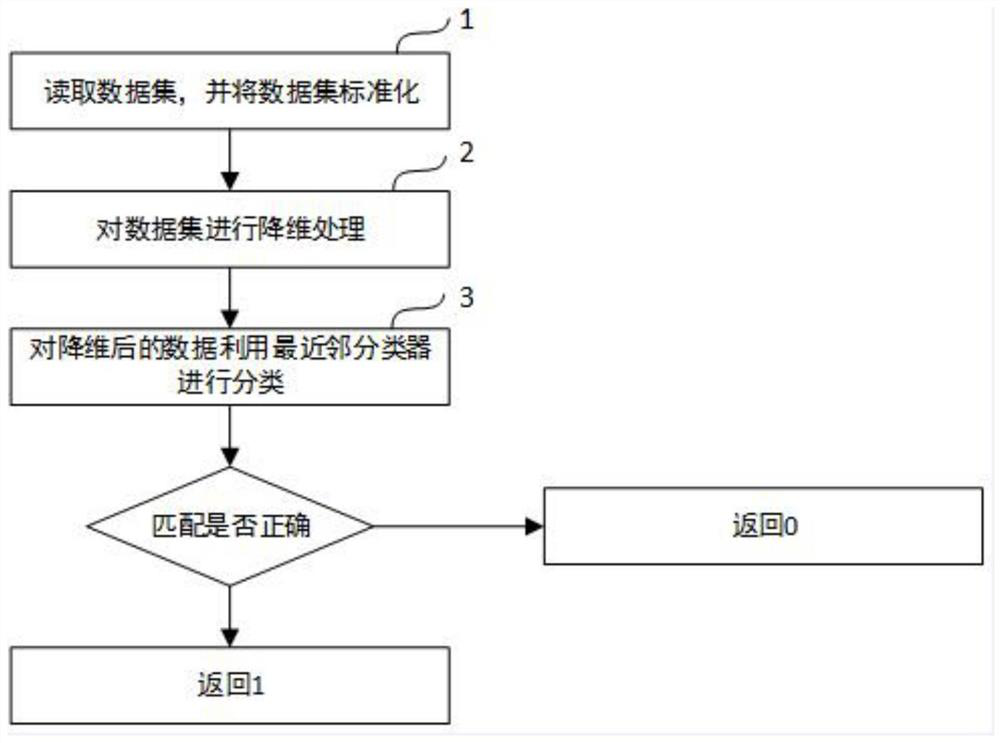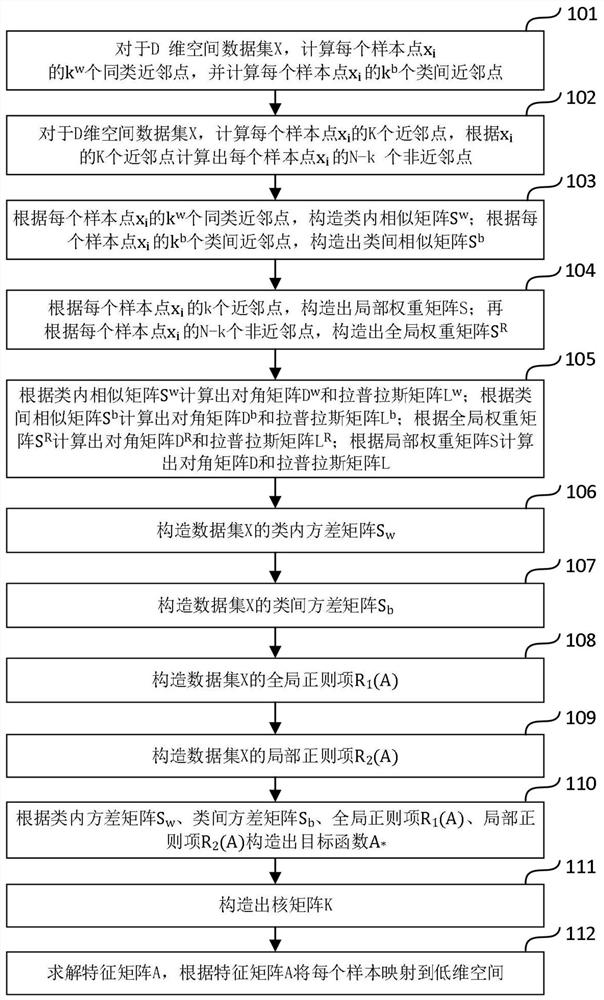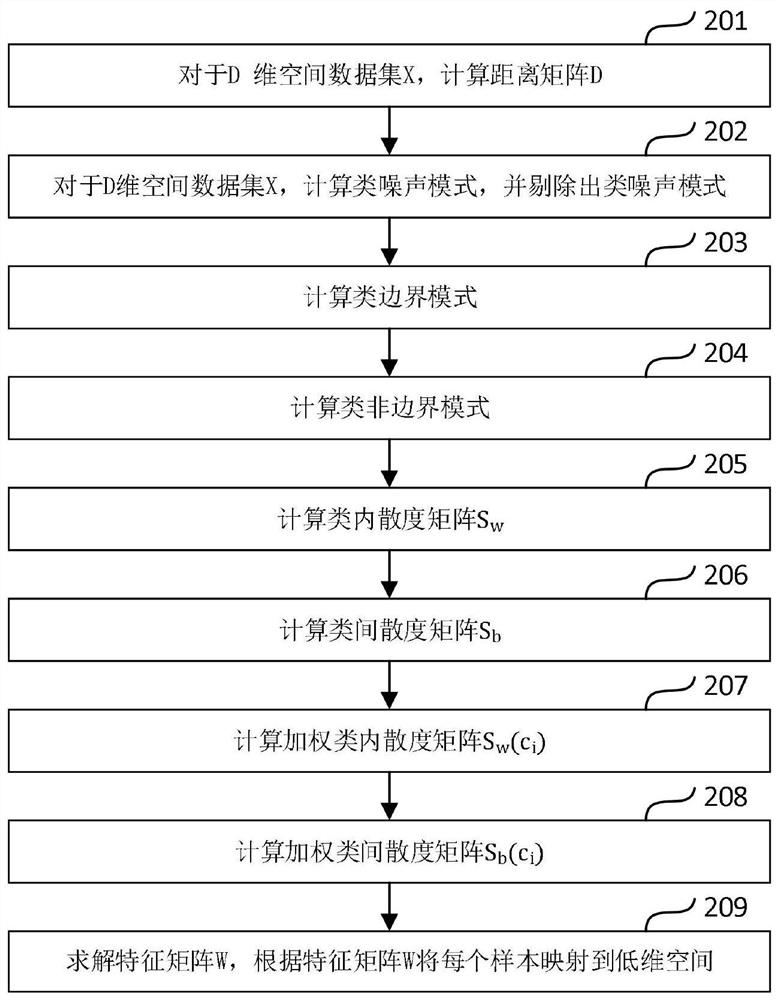Tobacco index data grade identification method based on data dimension reduction method
A technology for index data and data dimension reduction, applied in the field of level recognition, can solve problems such as high dimensionality, difficulty in tobacco leaf data level and quality, and achieve the effects of enhancing mining capabilities, optimizing projection directions, and enhancing stability
- Summary
- Abstract
- Description
- Claims
- Application Information
AI Technical Summary
Problems solved by technology
Method used
Image
Examples
Embodiment 1
[0050] like Figure 1-2 As shown, the present invention provides a technical solution: a tobacco leaf index data grade identification method based on a data dimensionality reduction method, comprising the following steps:
[0051] Step 1: Read the tobacco leaf index data sample set, and standardize the data set to obtain the D-dimensional spatial data set X={x 1 , x 2 ,...,x N}.
[0052] Step 2: For the D-dimensional spatial data set X={x 1 , x 2 ,...,x N} for data dimensionality reduction.
[0053] Step 3: Use the nearest neighbor classifier to classify the dimensionally reduced data. If the classification match is correct, return 1; if the classification match is wrong, return 0.
[0054] In the step 2, the data dimension reduction processing method is to use the global and local kernel margin discriminant analysis algorithm for the D-dimensional space data set X={x 1 , x 2 ,...,x N} for dimensionality reduction and clustering, which specifically includes the follo...
Embodiment 2
[0106] like figure 1 and 3 As shown, the present invention provides a technical solution: a tobacco leaf index data grade identification method based on a data dimensionality reduction method, comprising the following steps:
[0107] Step 1: Read the tobacco leaf index data sample set, and standardize the data set to obtain the D-dimensional spatial data set X={x 1 , x 2 ,...,x N}.
[0108] Step 2: For the D-dimensional spatial data set X={x 1 , x 2 ,...,x N} for data dimensionality reduction.
[0109] Step 3: Use the nearest neighbor classifier to classify the dimensionally reduced data. If the classification match is correct, return 1; if the classification match is wrong, return 0.
[0110] The data dimensionality reduction processing method in the step 2 is to use the weighted maximum class boundary criterion algorithm to reduce the D-dimensional space data set X={x 1 , x 2 ,...,x N} Inter-class overlap, including the following steps:
[0111] Step 201: Robust ...
PUM
 Login to View More
Login to View More Abstract
Description
Claims
Application Information
 Login to View More
Login to View More - R&D
- Intellectual Property
- Life Sciences
- Materials
- Tech Scout
- Unparalleled Data Quality
- Higher Quality Content
- 60% Fewer Hallucinations
Browse by: Latest US Patents, China's latest patents, Technical Efficacy Thesaurus, Application Domain, Technology Topic, Popular Technical Reports.
© 2025 PatSnap. All rights reserved.Legal|Privacy policy|Modern Slavery Act Transparency Statement|Sitemap|About US| Contact US: help@patsnap.com



